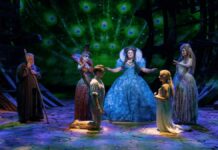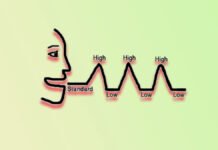I A Richards, a prominent literary critic, introduced the concept of the “four kinds of meaning” in his influential book Practical Criticism (1929). Richards’ theory was part of his effort to develop a systematic approach to literary analysis, focusing on how meaning is constructed and interpreted in a text. He believed that understanding these four types of meaning was crucial for a comprehensive interpretation of any literary work. This concept is a vital part of his theory of language and meaning, which he developed as a way to understand how readers interpret texts, particularly poetry.
Richards argued that words in a text, especially in poetry, do not convey a single, straightforward meaning. Instead, they operate on multiple levels simultaneously, creating a complex web of interpretations.
Sense
Sense refers to the literal or basic meaning of the words in a text, which is the straightforward dictionary definition of the words used. It is the direct, explicit meaning that does not involve any figurative or connotative language.
This type of meaning concerns the actual information or content the words convey. It answers the question: “What is being said?” Understanding the “sense” involves grasping the precise definitions of words and their syntactical relationships within a sentence.
E.g., In the line “The sun rises in the east,” the “sense” is the basic factual information that the sun appears in the sky in the eastern direction.
Feeling
Feeling refers to the emotional tone or attitude expressed by the words in a text. It is the subjective aspect of meaning involving the emotional responses that the words evoke in the reader.
This type of meaning focuses on the emotional colouring or mood of the text, such as joy, sorrow, irony, or anger. The feeling is not only about what is explicitly stated but also about how it is stated and what it suggests about the speaker’s or writer’s attitude.
E.g., In the line “I wandered lonely as a cloud,“ the word “lonely“ conveys a sense of solitude and melancholy, giving the reader insight into the speaker’s emotional state.
Tone
The tone is the author’s or speaker’s attitude toward the subject or audience as implied by the text. It is the underlying stance or viewpoint that colours the entire piece.
The tone can be serious, humorous, sarcastic, formal, informal, etc. It is about how the author feels about the subject matter or the reader, and it is conveyed through word choice, sentence structure, and stylistic elements.
E.g., A sarcastic tone might be conveyed through the use of irony, as in, “What a fine mess you’ve made of things!“ Here, the “tone“ indicates the speaker’s disapproval despite the words superficially praising the situation.
Intention
Intention refers to the purpose or objective that the author or speaker aims to achieve through the text. It is the desired effect on the reader or the listener, whether to inform, persuade, entertain, or provoke.
This type of meaning involves understanding what the author wants to communicate and why they are communicating it. The intention might be explicit, as in a persuasive essay, or more subtle, as in a poem that evokes a particular mood or contemplation.
E.g., In a motivational speech, the intention might be to inspire and encourage the audience to take specific actions or adopt a particular mindset.
Key Points
Interrelation: These four aspects of meaning are often interrelated and can influence each other.
Complexity: Richards argued that understanding these four aspects allows for a more nuanced and complete interpretation of a text.
Ambiguity: He emphasised that words and phrases can have multiple meanings across these four categories.
Reader Response: This framework acknowledges the role of the reader in interpreting meaning, particularly in terms of feeling and tone.
Practical Application: Richards used this framework in his teaching, asking students to analyse poems without any contextual information, focusing solely on the text.
Objective Criticism: This approach aligns with the broader movement of New Criticism, which emphasises close reading of texts without relying on external information.
Linguistic Influence: Richards’ work in this area also had a significant impact on the field of linguistics, particularly semantics.
Educational Impact: The four kinds of meaning became a valuable tool for teaching literary analysis and critical thinking skills.
Limitations: While influential, this approach has been critiqued for potentially overlooking important contextual factors that influence meaning.
Evolution: Later, critics have built upon and modified this framework, but it remains a fundamental concept in literary analysis.
Significance in Literary Criticism
Richards’ concept of the four kinds of meaning was revolutionary in literary criticism because it emphasised the complexity of language and how different layers of meaning contribute to the overall interpretation of a text. By recognising these distinct types of meaning, readers and critics can approach texts with a more nuanced understanding, considering not just what is being said (sense) but how it is being said (tone), how it feels (feeling), and why it is being said (intention).
Impact on Literary Criticism
Emphasis on Close Reading: Richards’ framework encouraged a close reading of texts, focusing on the interplay between different types of meaning to understand a literary work’s full impact.
Reader Response: Richards’ ideas laid the groundwork for later reader-response criticism by acknowledging that the meaning of a text is not fixed but is created through the interaction between the text and the reader.
Educational Use: His approach has been widely used in teaching literature, helping students to break down complex texts and appreciate the multiple layers of meaning that contribute to a text’s richness and depth.
Application in Practical Criticism
In Practical Criticism, Richards used this framework to analyse the responses of students to various poems, illustrating how readers often focus on different aspects of meaning, sometimes missing the full richness of a text. His approach encourages a more holistic reading, where all four kinds of meaning are considered together to gain a deeper understanding of the work.
Richards’ concept of four kinds of meaning was part of his broader effort to develop a systematic approach to literary criticism. By breaking down meaning into these categories, he provided a structured way to engage with and analyse texts, emphasising the complexity and richness of language use in literature. This approach has been precious in encouraging readers to pay close attention to the nuances of language and to consider multiple layers of meaning in a text. The idea that meaning in literature is multi-layered has become a fundamental principle in various schools of literary theory.




























